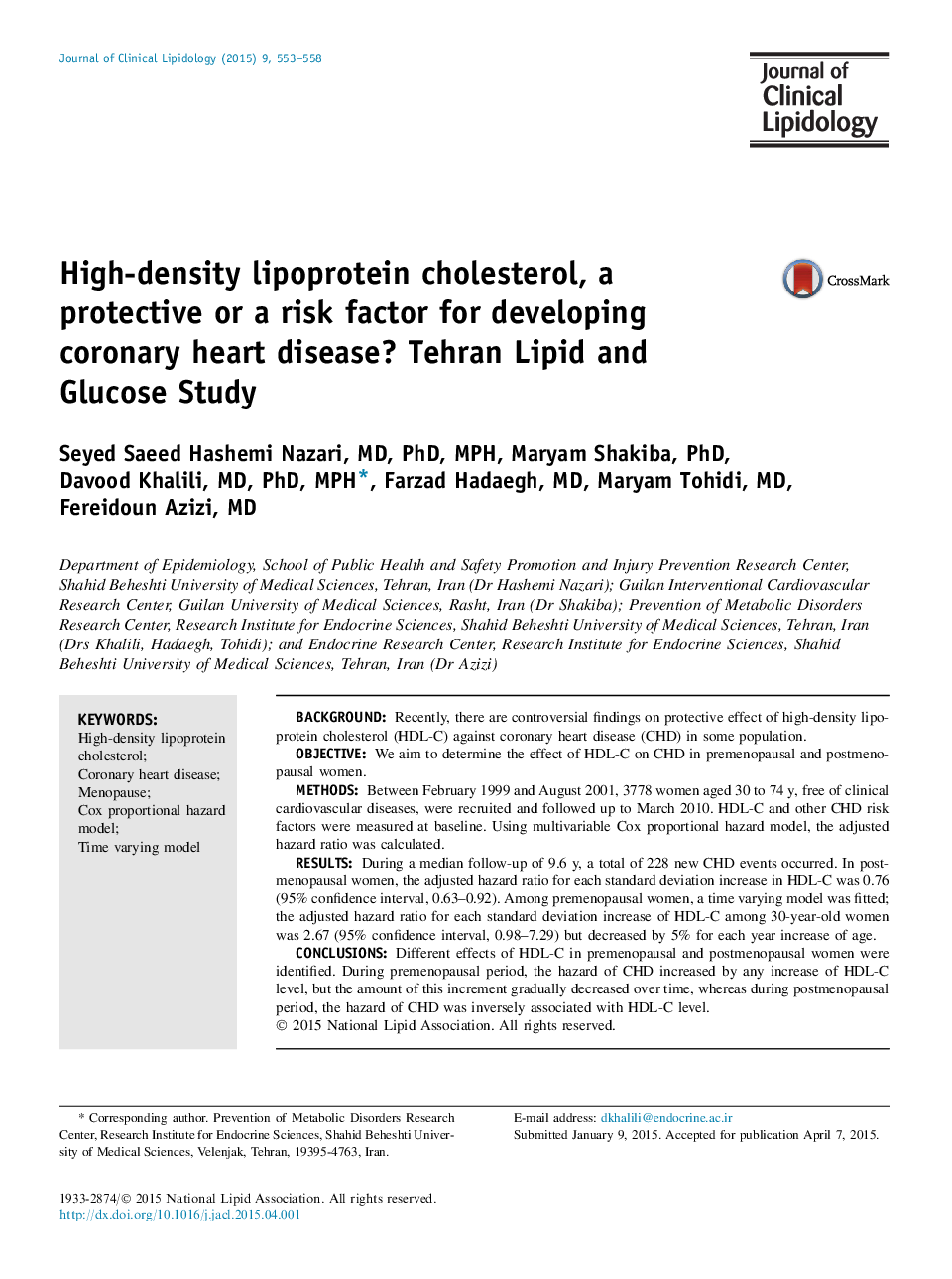| Article ID | Journal | Published Year | Pages | File Type |
|---|---|---|---|---|
| 5985768 | Journal of Clinical Lipidology | 2015 | 6 Pages |
â¢There are controversial findings on protective effect of HDL-C against CHD.â¢In this study, different effects of HDL-C against CHD were identified in premenopausal and postmenopausal women.â¢During premenopausal period, the hazard of CHD increased by each any increase of HDL-C level, but the amount of this increment gradually decreased over time.
BackgroundRecently, there are controversial findings on protective effect of high-density lipoprotein cholesterol (HDL-C) against coronary heart disease (CHD) in some population.ObjectiveWe aim to determine the effect of HDL-C on CHD in premenopausal and postmenopausal women.MethodsBetween February 1999 and August 2001, 3778 women aged 30 to 74Â y, free of clinical cardiovascular diseases, were recruited and followed up to March 2010. HDL-C and other CHD risk factors were measured at baseline. Using multivariable Cox proportional hazard model, the adjusted hazard ratio was calculated.ResultsDuring a median follow-up of 9.6Â y, a total of 228 new CHD events occurred. In postmenopausal women, the adjusted hazard ratio for each standard deviation increase in HDL-C was 0.76 (95% confidence interval, 0.63-0.92). Among premenopausal women, a time varying model was fitted; the adjusted hazard ratio for each standard deviation increase of HDL-C among 30-year-old women was 2.67 (95% confidence interval, 0.98-7.29) but decreased by 5% for each year increase of age.ConclusionsDifferent effects of HDL-C in premenopausal and postmenopausal women were identified. During premenopausal period, the hazard of CHD increased by any increase of HDL-C level, but the amount of this increment gradually decreased over time, whereas during postmenopausal period, the hazard of CHD was inversely associated with HDL-C level.
